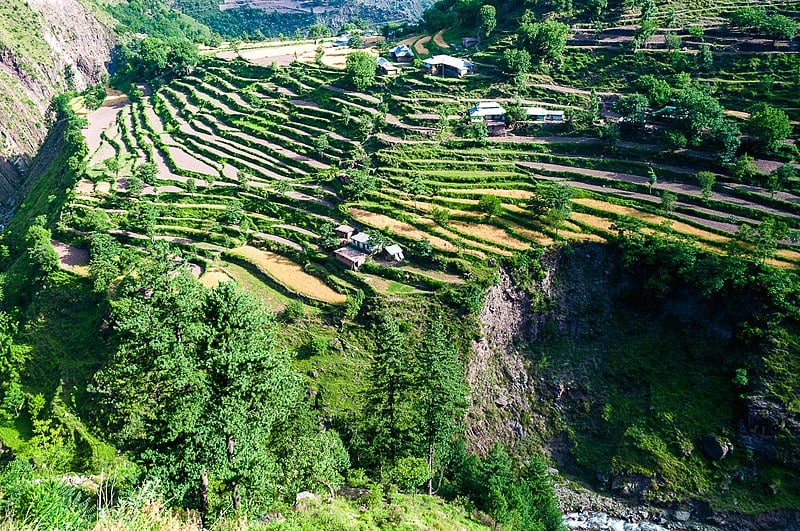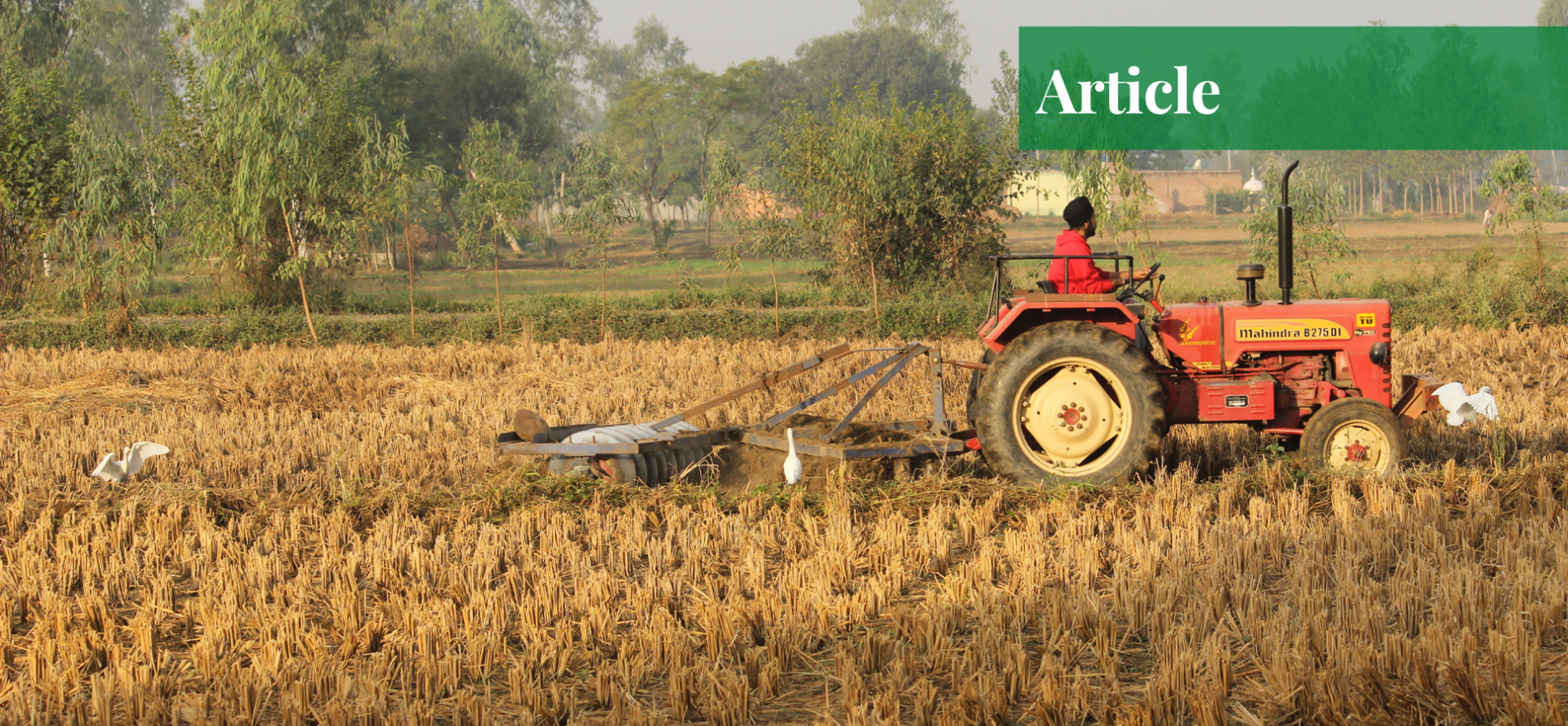Ayesha Irum is working as a Senior Scientist at Ayub Agricultural Research Institute Faisalabad, under the Agriculture Department of the Government of the Punjab.
The Agricultural Sector of Pakistan
In the wake of changing dynamics of climate, plants and animals—including social animals—are impacted by the devastation of climate. The dawn of the 21st century has brought unwelcomed guests with it, in terms of global warming. As a result, the agricultural sector of Pakistan is going to face the agony of global warming.
Gone are the days, however, when the environmental conditions of Pakistan supported the growth of the agricultural sector, when wheat, rice and, sugarcane were giving bumper crops and were generating a huge amount of foreign exchange. The environmental conditions, i.e. rainfall, photoperiod, etc., were complementing the fertile soils of Punjab and Sindh.
The agriculture sector of Pakistan accounts for 24% of the gross domestic product of the country and is the major contributor to foreign exchange. Unfortunately, multifaceted issues have been impeding the growth of this huge industry. Fast-paced industrialization coupled with mass migration from rural to metropolitan areas has reduced the cultivable land area.

Outdated practices of irrigation waste a large quantity of water whereas, initiatives like the Green Revolution and the Evergreen Revolution came up with promising yield targets but could not regulate the balance between influx and efflux of soil nutrients. Resultantly, soil health is deteriorating since then. More so, Asia has become prone to pest infestation. In the past few years, pest infestations and disease manifestation, in general, and locusts, in particular, have taken a heavy toll on Pakistan’s agriculture. To this, the pandemic has added insult to the injury.
So, in this whole scenario optimizing the utilization of available resources with minimum disruption of soil is the key determinant to sustainable crop yield. Precision agriculture comes as a promising strategy to deal with both soil and environmental impacts. It will allow for precise and site-specific application of inputs like water, seeds, fertilizers, and pesticides, etc. to optimize the farm profitability while keeping the risk of environmental degradation to the minimum.
What is Precision Agriculture?
The term “precision agriculture” implies the integration of information technology with farming practices to maximize input efficiency. It is a 4R strategy that includes the right time of input application, the right source, the right method of application and, the right rate of applied input. Generally speaking, from the time of sowing to harvesting, a farmer can monitor his farm, access its soil fertility status and, manage the available resources using the advances in information and technology. Doing the right thing, at the right time, in the right way, and in the right place not only maximizes profitability but also minimizes environmental risks.
Applicability of Precision Agriculture
At this very point of the global age, the inhabitants of planet Earth are struggling hard with two major challenges—namely food insecurity and climate change. In this scenario, the need for precision agriculture has become even more significant. Precision agriculture uses geopositioning systems, computer-based software and, related tools to thoroughly monitor, access, and analyze the agricultural land.
A geopositioning system (GPS) helps in drawing field maps and reports the crop growth conditions. Thanks to these systems, the farmer gets informed well before the appearance of any deficiency symptom in his field. Further, advanced software like GIS (Geographical Information System) mapped the field according to the spatial and temporal variability of fertility status. It helps in devising the land suitability classification—crops vs soil type and in managing the cropping scheme.
Precision agriculture also involves remote sensing technology. The sensors-mounted satellites take colored aerial images which are processed through the computer system. Through this remote sensing, the technology farmer can easily differentiate between normal and abnormal crop growth. Besides, the integrated system of satellites, sending information about possible variations in weather conditions, helps the farmers to decide what input to apply or not to apply. Likewise, laser land leveling not only conserves water, an already scarce resource but also improves the water and nutrient use efficiency (NUE) of crops.
Affordability of Precision Agriculture for Pakistan
If the agricultural sector is to keep its sustainable contribution to Pakistan’s GDP, innovations should be given room. At this very juncture, precision agriculture has come up as a ray of hope. There is no denying the fact that the installation of such a hi-tech unit requires high investments. The financial condition of our farmers is not very good and hence, their affordability is low. So, Pakistan’s government itself should promote tech unicorns. Farmers should be provided with the services at a pocket-friendly cost. Fortunately, technology is not new to our masses.
According to the Pakistan Telecommunication Authority (PTA), Pakistan has 169 million cellular subscribers, 85 million 3G/4G subscribers, and 87 million broadband subscribers. Hence, quite a bit of the population has phones with android applications. Moreover, the weather forecasting system is already working to the best of its capabilities. The only thing to do is to make the link and channelize forecasts from the meteorological department to farmers directly through text messages and calls. Alerts can be broadcast well before the time of any weather emergency.
In 2019, locusts wrecked the cotton crop, particularly in southern Punjab. Many of the farmers in that area complained about the lack of coordination, cooperation, and negligence on part of the National Disaster Management Authority. If the system had been well-coordinated in sending emergency alerts, the trajectory of the losses would have been far less. So, precision agriculture is a welcomed move to sustainable agriculture.
Benefits of Precision Agriculture
Certainly, climate change will now continue for decades if not centuries. So, precise and judicious use of available resources has become critical. Precision agriculture has a promising future in Pakistan if implemented with full spirit and letter. If implemented properly, precision agriculture entails the following benefits for Pakistan:
- Cost-Effectiveness
One of the most appealing benefits of precision agriculture is its cost-effectiveness which saves resources and time. Digital mapping (both spatial and temporal) and colored imaging of aerial photographs tell the farmers not only about the physical condition of the soil, like its structure, texture, and water holding capacity but also provide information about the fertility status of the soil. So farmers can easily scrutinize the farming operation according to the need of the field and crop.
For example, if one plot of the field is showing color variability or stunted growth, it might be due to the poor nutrient use efficiency or poor water availability so instead of irrigating the field or blindly using fertilizer, that sole plot may be treated according to its need. Thus precision agriculture would prove to be both cost-effective and less laborious for Pakistani farmers.
- Prevention of Soil Degradation
Soil degradation is a prevalent issue in Pakistan, one which is likely to lead to food insecurity. The agricultural sector, which provides employment to 38.5% of the population and is responsible for the livelihoods of 65-70% of the population of Pakistan, is threatened by soil erosion and degradation.
Aside from the constant floods in Pakistan, waterlogging, and salinity, the constant use of heavy implements like heavy-duty tractors, harvesters, etc, makes hardpan and impedes the normal uptake of soil nutrients and also reduces aeration, causing land degradation. Since precision agriculture ensures the clear-cut use of farm machinery, it can largely minimize soil degradation.
- Prevents Water, Fertilizer and Crop Losses
Laser land leveling (LLL) avoids water and fertilizer losses from the agricultural field. Pakistan is a water-scarce country and 90% of its water is reportedly used in the agricultural sector. However, unfortunately, much of this water gets wasted due to the poor structure of the soil and the unlevelled fields. To this, outdated irrigation practices further exacerbate the situation.
Land leveling improves both water and fertilizer use efficiency in the long run and increases the yield of crops like wheat and rice. To facilitate farmers and motivate them to invest in land levelers, in August 2021, the Punjab government started offering a subsidy of Rs 250,000 per land leveler, under Prime Minister Imran Khan’s Agriculture Emergency Programme.
Precision agriculture is a triple win approach, involving the hi-tech industry, skilled labor, and sustainable farm profitability. Prime Minister Imran Khan has already taken several initiatives to promote the tech industry in the country. He is also enthusiastic about the asset of the country—the youth. So, hiring young blood for the promotion of precision agriculture will create jobs, promotes hi-tech, and be a step forward in the modernization of agriculture.
Conclusion
Precision agriculture is a promising approach. It enables one to make the best use of one’s available resources. However, global resources are depleting at a fast pace; agricultural land has shrunken since the onset of industrialization, water crises are knocking at the door, and the price hike has crippled the purchasing power of the masses. To this, global warming has added fuel to the fire. All these factors have become detrimental to sustainable agriculture.
Recently a tectonic shift in human instinct has been observed. Now, people are generating revenue from the trade and tech industry. Nonetheless, Pakistan is a developing state with a fragile economy and marginal stakes in technology. Yet, it has great potential in agriculture. The only thing it needs is to integrate technology with agriculture. It is not enough to work in a new environment, what’s important is the creation of an environment with the available resources.
If you want to submit your articles and/or research papers, please check the Submissions page.
The views and opinions expressed in this article/paper are the author’s own and do not necessarily reflect the editorial position of Paradigm Shift.


















